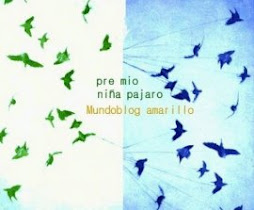Aqui ve el tercer capitol sobre com pot actuar el algoritme MCL alhora de construir complexes proteics entre proteines que s'han copurificat conjuntament.
Com en els dos posts anteriors podeu trobar l'entrada original a Buried treasure.
-------------------------------------------
In 2006, Krogan and coworkers published a paper in Nature describing a global analysis of protein complexes in budding yeast. This resulted in a network of 7,123 protein-protein interactions involving 2,708 proteins, which was organized into 547 protein complexes using the Markov clustering algorithm.
Considering my previous two posts, it probably comes as a surprise to nobody that I wanted to check if the issue of unnatural clusters also affected this study. Albert Palleja, a postdoc in my group, thus extracted the 547 sub-networks corresponding the protein complexes and applied single-linkage clustering to check if all clusters corresponded to connected sub-networks.
It turned out that 9 of the 547 protein complexes do not correspond to connected sub-networks in the protein interaction network that formed the basis for the clustering. Two complexes each contain two additional subunits that have no interactions with any of the other subunits of the proposed complex, five complexes contain one additional subunit with no interactions to other subunits, and two complexes are proposed hetero-dimers made up of subunits that do not interact according to the interaction network. These complexes are visualized in the figure below with the erroneous subunits highlighted in red:
To check if these additional subunits are in any way supported by the experimental data presented in the paper, I downloaded the set of raw purification from the Krogan Lab Interactome Database. For 4 of the 9 complexes, the additional subunits are weakly supported by at least one purification. It should be noted, however, that this evidence was not judged to be sufficiently reliable by the authors themselves to include the interaction in the core network based on which the complexes were derived.
To make a long story short, this analysis shows that 9 of the 547 protein complexes published by Krogan and coworkers contain one or more subunits that are not supported by the interaction network from which the complexes were derived. Of these, 5 complexes contain subunits that have no support in the underlying experimental data, and which are purely artifacts of using the MCL algorithm without without enforcing that clusters must correspond to connected sub-networks.
Com en els dos posts anteriors podeu trobar l'entrada original a Buried treasure.
-------------------------------------------
In 2006, Krogan and coworkers published a paper in Nature describing a global analysis of protein complexes in budding yeast. This resulted in a network of 7,123 protein-protein interactions involving 2,708 proteins, which was organized into 547 protein complexes using the Markov clustering algorithm.
Considering my previous two posts, it probably comes as a surprise to nobody that I wanted to check if the issue of unnatural clusters also affected this study. Albert Palleja, a postdoc in my group, thus extracted the 547 sub-networks corresponding the protein complexes and applied single-linkage clustering to check if all clusters corresponded to connected sub-networks.
It turned out that 9 of the 547 protein complexes do not correspond to connected sub-networks in the protein interaction network that formed the basis for the clustering. Two complexes each contain two additional subunits that have no interactions with any of the other subunits of the proposed complex, five complexes contain one additional subunit with no interactions to other subunits, and two complexes are proposed hetero-dimers made up of subunits that do not interact according to the interaction network. These complexes are visualized in the figure below with the erroneous subunits highlighted in red:
To check if these additional subunits are in any way supported by the experimental data presented in the paper, I downloaded the set of raw purification from the Krogan Lab Interactome Database. For 4 of the 9 complexes, the additional subunits are weakly supported by at least one purification. It should be noted, however, that this evidence was not judged to be sufficiently reliable by the authors themselves to include the interaction in the core network based on which the complexes were derived.
To make a long story short, this analysis shows that 9 of the 547 protein complexes published by Krogan and coworkers contain one or more subunits that are not supported by the interaction network from which the complexes were derived. Of these, 5 complexes contain subunits that have no support in the underlying experimental data, and which are purely artifacts of using the MCL algorithm without without enforcing that clusters must correspond to connected sub-networks.









Cap comentari:
Publica un comentari a l'entrada